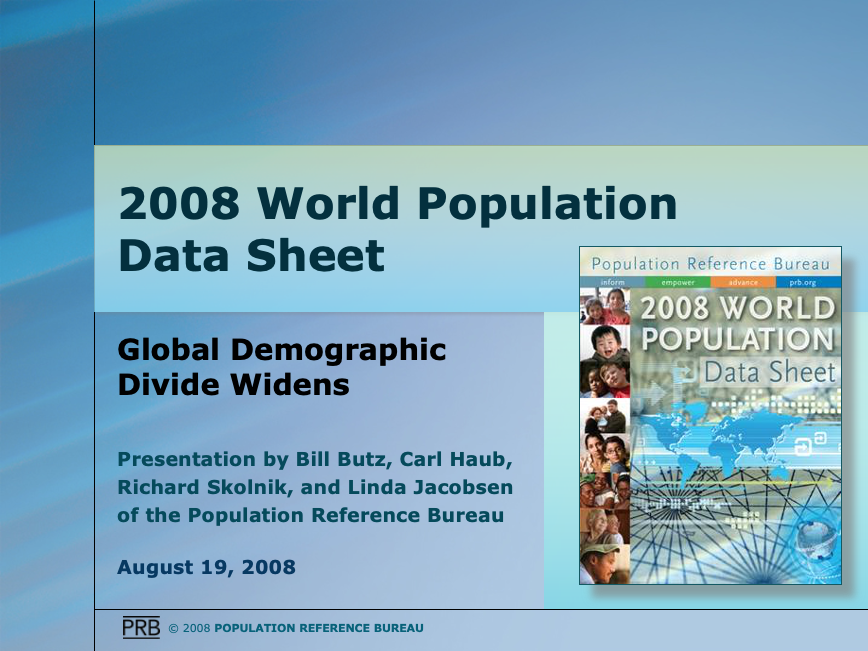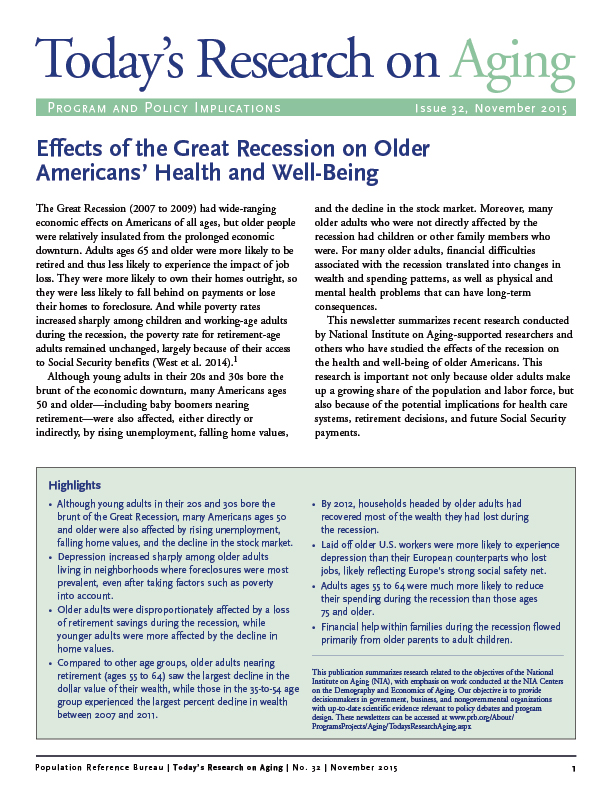PRB Discuss Online: How Can Family Planning Programs Reduce Poverty? Evidence From Bangladesh
(2010) Family planning is one of the most cost-effective health interventions in the developing world.
(2010) Family planning is one of the most cost-effective health interventions in the developing world.

What information does a census collect? The answer depends on when and where in time the census was taken.
(2010) Most poor children achieve less, exhibit more problem behaviors, and are less healthy than children raised in more-affluent families. Looking beyond these well-known correlations between poverty and negative outcomes in childhood, recent studies have assessed the effects of childhood poverty in the United States on later attainment and health.
(2008) Globalization helped increase incomes in Canada, the United States, and Mexico for more than 10 years, but left many children vulnerable economically.
(2002) Recently released population estimates for Russia confirm the accelerating population decline that has been underway since the breakup of the Soviet Union more than a decade ago.
(2005) More African Americans are living with HIV or already dead from AIDS than any other single racial or ethnic group in the United States—a crisis one black AIDS activist calls "a state of emergency" for the African American community.

(2008) The demographic divide—the inequality in the population and health profiles of rich and poor countries—is widening.

Project: Demography and Economics of Aging and Alzheimer’s Disease
This report summarizes recent research conducted by National Institute on Aging-supported researchers and others who have studied the effects of the recession on the health and well-being of older Americans.